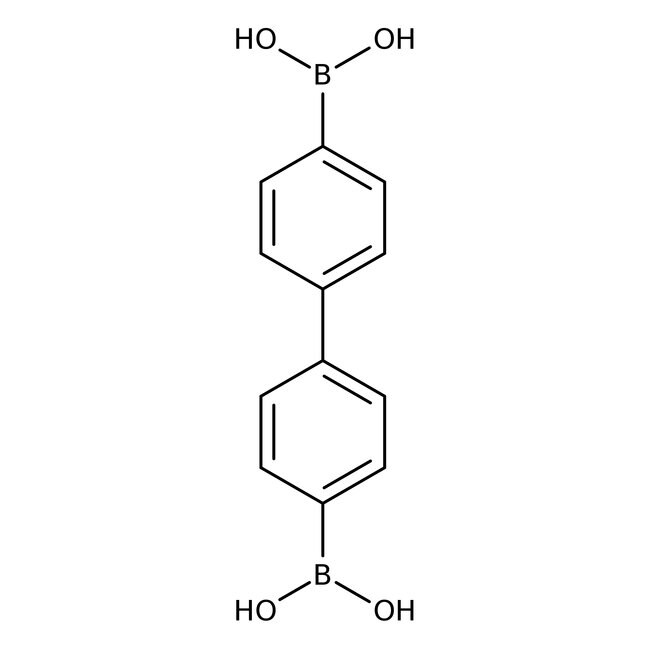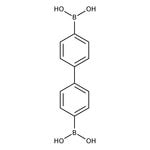Search Thermo Fisher Scientific
Thermo Scientific Chemicals
Biphenyl-4,4'-diboronic acid, 94%, Thermo Scientific Chemicals
Catalog number: L13328.03
1 g, Each



Thermo Scientific Chemicals
Biphenyl-4,4'-diboronic acid, 94%, Thermo Scientific Chemicals
Catalog number: L13328.03
1 g, Each
Quantity
Catalog number: L13328.03
also known as L13328-03
Price (USD)
Price: 235.00
Online price: 199.65
Your price:
Quantity
-
Chemical Identifiers
CAS
4151-80-8
IUPAC Name
[4'-(dihydroxyboranyl)-[1,1'-biphenyl]-4-yl]boronic acid
Molecular Formula
C12H12B2O4
InChI Key
SLHKDOGTVUCXKX-UHFFFAOYSA-N
SMILES
OB(O)C1=CC=C(C=C1)C1=CC=C(C=C1)B(O)O
Specifications
Appearance (Color)
White to pale cream
Form
Powder or granular powder or lumps
Assay (Aqueous acid-base Titration)
≥92.0%
Assay (HPLC)
≥92.0%
Proton NMR
Conforms to structure
Description
Biphenyl-4,4'-diboronic acid is used in the preparation of cycloparaphenylenes through Suzuki coupling. It is also employed in the synthesis of 1,3,2-diazaboroine derivatives, which is useful for organic thin-film transistor applications. It plays an important role in the preparation of arylboronates from reactions with catechol, dihydroxynaphthalene and diaminobenzenedithiol, which finds application as organic field-effect transistors and light emitting diodes.
This Thermo Scientific Chemicals brand product was originally part of the Alfa Aesar product portfolio. Some documentation and label information may refer to the legacy brand. The original Alfa Aesar product / item code or SKU reference has not changed as a part of the brand transition to Thermo Scientific Chemicals.
Applications
Biphenyl-4,4′-diboronic acid is used in the preparation of cycloparaphenylenes through Suzuki coupling. It is also employed in the synthesis of 1,3,2-diazaboroine derivatives, which is useful for organic thin-film transistor applications. It plays an important role in the preparation of arylboronates from reactions with catechol, dihydroxynaphthalene and diaminobenzenedithiol, which finds application as organic field-effect transistors and light emitting diodes.
Solubility
Soluble in water.
Notes
Incompatible with strong oxidizing agents.
Biphenyl-4,4′-diboronic acid is used in the preparation of cycloparaphenylenes through Suzuki coupling. It is also employed in the synthesis of 1,3,2-diazaboroine derivatives, which is useful for organic thin-film transistor applications. It plays an important role in the preparation of arylboronates from reactions with catechol, dihydroxynaphthalene and diaminobenzenedithiol, which finds application as organic field-effect transistors and light emitting diodes.
Solubility
Soluble in water.
Notes
Incompatible with strong oxidizing agents.
RUO – Research Use Only
Figures
Documents & Downloads
Certificates
Search by lot number or partial lot number
Frequently asked questions (FAQs)
Citations & References
Search citations by name, author, journal title or abstract text